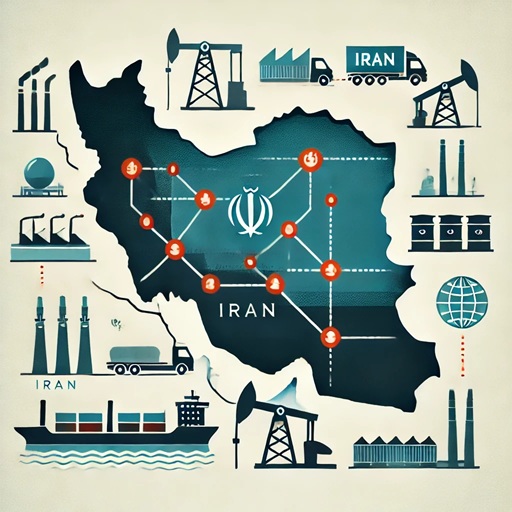Introduction
Hello and welcome! If you’re considering investing in Iran, you’ve come to the right place. Iran is a land of opportunities and challenges, with a dynamic economy, rich resources, and a strategic location. However, understanding the rules, regulations, risks, and advantages is crucial before making any decisions.
In this guide, we’ll take a friendly and informative look at what it means to invest in Iran today. We’ll cover regulations, challenges, opportunities, and real-world examples to give you a comprehensive overview.
- Why Consider Investing in Iran?
Despite economic and political challenges, Iran presents several compelling reasons for investment:
1.1 Strategic Location
Iran is positioned at the crossroads of the Middle East, Central Asia, and Europe. This makes it an ideal hub for businesses looking to expand into regional markets. The country has access to the Persian Gulf and Caspian Sea, providing key trade routes.
1.2 Rich Natural Resources
Iran ranks among the top countries in the world for oil and natural gas reserves. Additionally, it has vast mineral resources, including copper, zinc, iron ore, and rare earth elements.
1.3 Large and Educated Workforce
With a literacy rate exceeding 85% and a strong emphasis on STEM (Science, Technology, Engineering, Mathematics) education, Iran offers a highly skilled and youthful labor force.
1.4 Growing Domestic Market
Iran has a population of over 85 million people, creating a large domestic consumer market for goods and services, ranging from technology to food products.
- Understanding the Regulatory Environment
To successfully invest in Iran, it’s essential to understand the country’s investment laws and regulations.
2.1 Foreign Investment Promotion and Protection Act (FIPPA)
This law provides protection for foreign investments, ensuring that:
- Foreign investors receive the same treatment as local investors.
- Investors have the right to transfer profits and capital out of Iran.
- Investments are protected against nationalization and expropriation.
To benefit from FIPPA, investors must obtain an investment license from the Organization for Investment, Economic, and Technical Assistance of Iran (OIETAI).
2.2 Sectors Open for Foreign Investment
Iran allows foreign investment in various sectors, including energy, industry, agriculture, transportation, and technology. However, certain strategic industries, such as banking and telecommunications, have restrictions.
2.3 Business Structures Available for Foreign Investors
Investors can choose from different business structures, including:
- Joint ventures with local companies.
- Wholly owned subsidiaries.
- Partnerships with Iranian businesses.
- Franchising and licensing agreements.
- Challenges to Consider
While Iran has significant investment potential, investors should be aware of the risks and challenges:
3.1 Economic Sanctions
Iran has faced international sanctions, particularly from the U.S. and the EU, which have impacted banking, trade, and international financial transactions. Sanctions change over time, so staying informed is crucial.
3.2 Bureaucracy and Administrative Hurdles
Starting and running a business in Iran can involve complex regulations, requiring patience and local partnerships to navigate the administrative system efficiently.
3.3 Currency Fluctuations and Inflation
The Iranian Rial (IRR) has experienced significant fluctuations in value. Inflation is also a challenge, which can impact investment returns if not properly managed.
3.4 Political Instability
Internal and regional political developments can affect the business climate. Investors should monitor changes in government policies and geopolitical events.
- Opportunities and Promising Sectors
Despite these challenges, there are numerous investment opportunities in Iran:
4.1 Energy and Petrochemicals
Iran’s oil and gas sector is one of the most lucrative industries, with investment opportunities in exploration, refining, and petrochemical production.
4.2 Agriculture and Food Processing
Iran’s diverse climate and vast arable land make it a strong agricultural player. Opportunities exist in farming, food processing, and exports.
4.3 Technology and Startups
Iran has a rapidly growing tech industry, with a thriving startup ecosystem. E-commerce, fintech, and IT services are promising sectors.
4.4 Tourism and Hospitality
Iran’s rich cultural heritage and historical sites attract millions of tourists each year, creating opportunities in hospitality, tour operations, and infrastructure development.
4.5 Manufacturing and Industry
From automobile production to pharmaceuticals, Iran’s industrial sector is a major contributor to its economy. Foreign investors can benefit from Iran’s skilled labor and relatively low production costs.
- Real-World Examples of Investment in Iran
To illustrate how foreign investment works in Iran, here are a few real-world examples:
5.1 Automotive Industry: Peugeot’s Return to Iran
French automaker Peugeot re-entered the Iranian market through a joint venture with Iran Khodro, investing in local production facilities. Despite sanctions, Peugeot managed to establish a strong market presence before external pressures forced a temporary withdrawal.
5.2 Telecommunications: MTN’s Investment in Iran
South Africa’s MTN Group invested in Iran’s telecom sector, becoming a major stakeholder in MTN Irancell, one of the country’s leading mobile service providers. The company has successfully operated despite regulatory and sanction-related challenges.
5.3 Renewable Energy: Foreign Investment in Solar Power
Iran’s government has encouraged foreign investment in renewable energy, leading to partnerships in the solar and wind energy sectors. Several European firms have explored these opportunities.
- The Current Economic and Political Climate (2025 Update)
As of 2025, Iran’s economy is navigating a mix of challenges and reforms:
- Sanctions remain a key concern, but negotiations with international powers may lead to new economic agreements.
- Inflation and currency devaluation continue, affecting both local businesses and foreign investors.
- Government efforts to attract investment include incentives for foreign businesses and economic diversification programs.
- Political developments, such as potential diplomatic breakthroughs, could significantly impact investment prospects.
- Conclusion and Final Tips
Investing in Iran can be a rewarding venture if approached with careful planning and knowledge. Here are a few final tips:
- Stay informed: Follow updates on sanctions, regulations, and economic policies.
- Find local partners: A reliable Iranian business partner can help navigate legal and administrative processes.
- Manage risks: Consider currency hedging, legal protections, and alternative investment structures.
- Use expert advice: Consult with investment advisors, legal professionals, and trade organizations before making decisions.
By understanding Iran’s business environment, you can make informed investment choices and tap into its vast potential. Happy investing!
Disclaimer: This guide is for informational purposes only and should not be considered financial or legal advice. Always conduct independent research or consult professionals before making investment decisions.
References
- Iran’s Foreign Investment Promotion and Protection Act (FIPPA) – Available at: https://www.investiniran.ir
- World Bank – Iran Economic Outlook – Available at: https://www.worldbank.org/en/country/iran/overview
- UNCTAD – World Investment Report: Iran Profile – Available at: https://unctad.org/topic/investment/world-investment-report
- Iran Chamber of Commerce, Industries, Mines & Agriculture – Available at: https://www.iranchamber.com
- OECD – Investment Policy Reviews: Iran – Available at: https://www.oecd.org/investment/
- International Monetary Fund (IMF) – Iran Economic Data and Analysis – Available at: https://www.imf.org/en/Countries/IRN
- Business Environment in Iran – Reports by Economist Intelligence Unit (EIU) – Available at: https://www.eiu.com
- Recent Developments in Iran’s Investment Laws – Legal Perspective – Available at: https://www.globallegalinsights.com/practice-areas/investment-funds-laws-and-regulations/iran
- Energy Investment in Iran – Reports by International Energy Agency (IEA) – Available at: https://www.iea.org
- Reports on Iran’s Business Climate – Tehran Stock Exchange (TSE) – Available at: https://www.tse.ir













